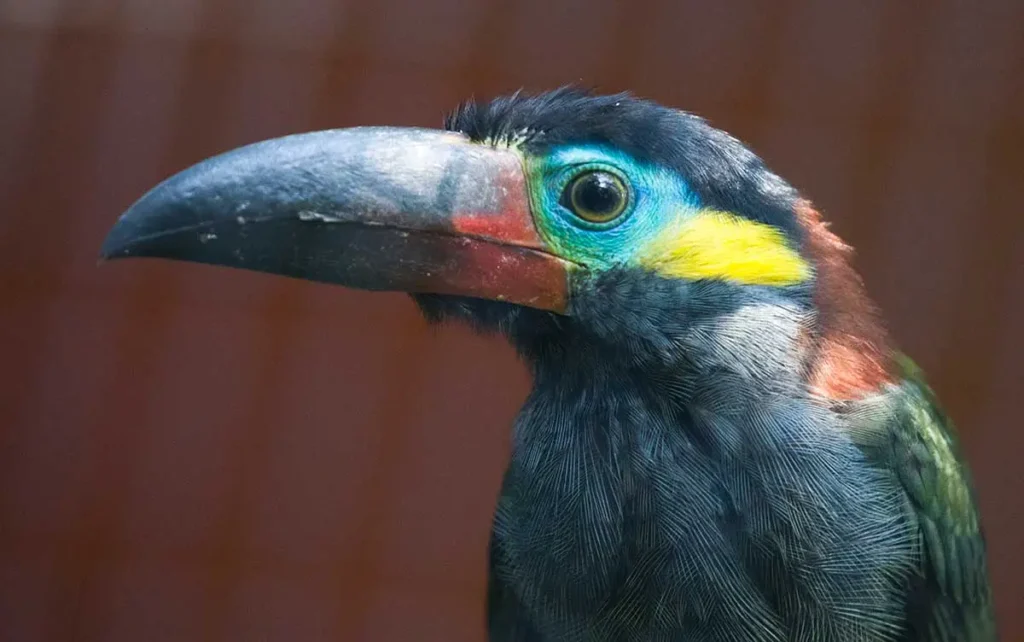
The Guianan Toucanet (Selenidera piperivora) is a fascinating member of the toucan family, boasting stunning plumage and a striking bill. This article will dive into the intriguing world of this bird, revealing its unique characteristics and behaviors among all the birds of the Amazon rainforest.
Scientific Classification
The Guianan Toucanet, also known as the Guyana Toucanet, belongs to the family Ramphastidae and the genus Selenidera. Its scientific name, Selenidera piperivora, was first described by ornithologist John Gould in 1854.
Subspecies
There are three recognized subspecies of the Guianan Toucanet, which are primarily distinguished by slight differences in their plumage and geographic distribution:
Selenidera piperivora piperivora – Found in French Guiana, Suriname, Guyana, and northern Brazil
Selenidera piperivora culik – Occurs in extreme southeastern Venezuela and northern Brazil
Selenidera piperivora langsdorffi – Found in eastern and southern Brazil
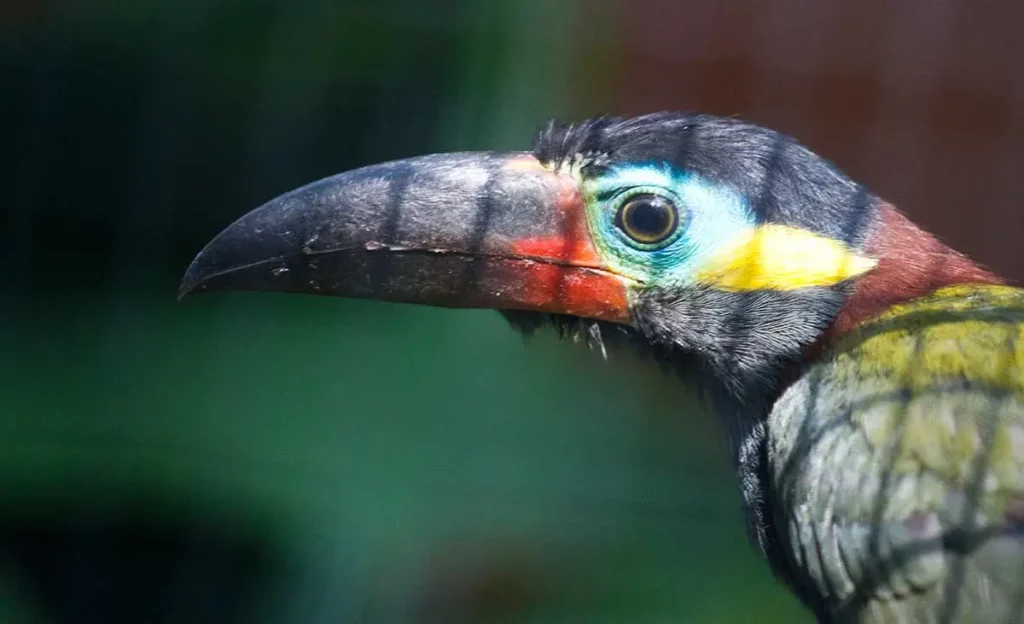
Distribution and Habitat
The Guianan Toucanet inhabits the north-eastern Amazon rainforest and can be found in various South American countries such as French Guiana, Suriname, Guyana, northern Brazil, and extreme southeastern Venezuela east through the Guianas. These birds prefer to dwell in the forest’s mid-level and sub-canopy of moist forest and selectively logged areas.
Physical Description
Size and Weight
The Guianan Toucanet is a relatively small toucan, measuring approximately 30-35 cm in length and weighing around 130-170 grams. Despite their size, these birds are known for their striking appearance.
Plumage and Bill Patterns
The bird’s plumage is predominantly green, with a yellow collar and green-yellow belly. It has a black cap, and the red extends from the base of its bill to its cheeks, with only a hint bare blue skin patch surrounding the eyes. The same bill pattern is seen in both sexes, although the female’s bill is typically smaller and less curved.
One notable feature of the Guianan Toucanet is its unique bill. The bill is large and colorful, with a base color of black and a distinctive yellowish line running down its length. The upper mandible is tipped with a red band, while the lower mandible has chestnut tips.
Sexual Dimorphism
Males and females exhibit subtle differences in their plumage and bill patterns. Males tend to have a more yellow feathers vibrant coloration, while the adult females have a more green-gray hue.
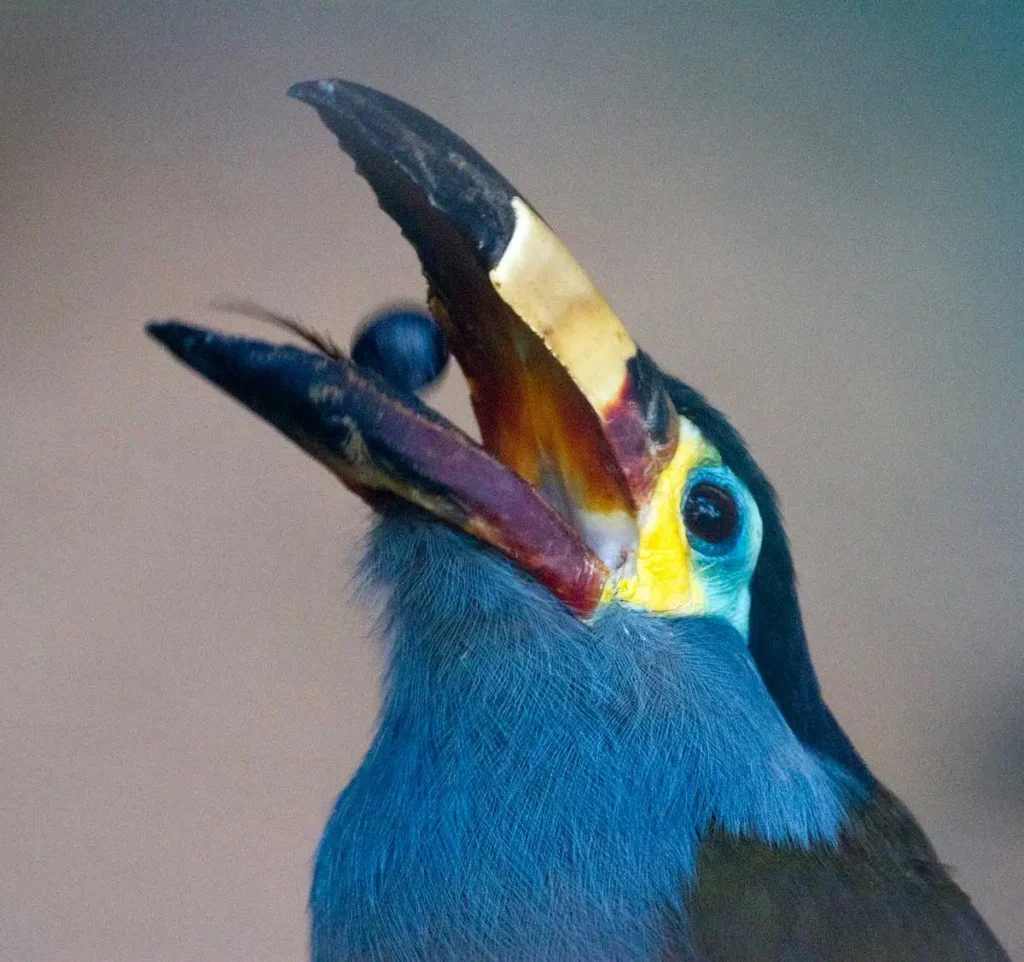
Behavior and Ecology
Social Behavior
Guianan Toucanets are birds typically found in small groups or pairs. They are social birds that often join mixed-species flocks in the forest canopy, foraging and interacting with other bird species.
Unlike the Guianan Toucanet, some other members of the Ramphastidae family, such as the emblematic Toco Toucan, are often more solitary in nature. The Toco Toucan, for instance, tends to lead a more independent lifestyle, not typically forming the small groups common among Guianan Toucanets. This divergence in social behavior underscores the rich diversity within the toucan family, each species boasting its unique adaptations and behaviors. Explore more about the intriguing world of the Toco Toucan to delve deeper into the complexity of these remarkable birds.
Calls and Vocalization
The basic call of the Guianan Toucanet is a series of short, frog-like “arrouk” notes. In addition to the basic call, these birds also produce various soft rattles, rising squawks, and other calls, which they use to communicate with one another and maintain contact with within their group. The calls and vocalization of the Guianan Toucanet are distinct, making it easy to identify them in the dense forest.
Diet and Feeding Habits
The Guianan Toucanet’s diet mainly consists of fruits, seeds, and insects. They have a particular preference for fruits of the pepper family, which is reflected in their scientific name, Selenidera piperivora. The Guianan Toucanet also takes insects and small vertebrates opportunistically, supplementing their predominantly fruit-based diet.
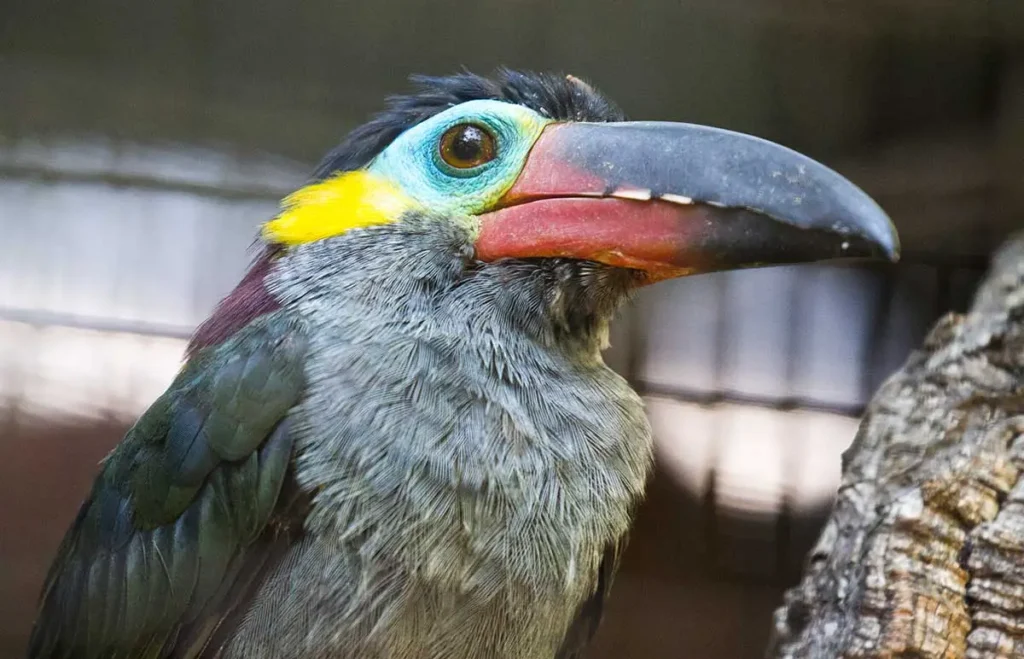
Reproduction and Breeding
Breeding Season
The Guianan Toucanet breeds during the early part of the year, with the breeding season typically occurring between January and May. However, the timing may vary depending on the availability of food, mandatory changes in their habitat, and other environmental factors.
Nesting and Eggs
Guianan Toucanets typically nest in natural cavities or woodpecker holes in trees. The female lays two or three eggs, which are incubated by both parents for about 16-18 days. The chicks are born blind and naked, and they are fed by both parents until they fledge, which usually occurs around 40-45 days after hatching.
Courtship and Mating
During the breeding season, males engage in a unique behavior called courtship feeding, in which they offer food to females as part of their mating display. Males courtship feed females by regurgitating fruit and presenting it to the female, who then decides whether to accept the offering. This behavior not only strengthens the bond between the pair but also helps to ensure that the female is well-nourished during the critical nesting period.
Population and Conservation
Population Size and Status
The Guianan Toucanet has a large range and is relatively widespread across its preferred habitat. However, the exact population size of the species is not well-known. The International Union for Conservation of Nature (IUCN) has listed the Guianan Toucanet as a species of Least Concern due to its extensive range and presumed stable population.
Threats and Conservation Efforts
Despite its widespread distribution, the Guianan Toucanet faces threats from habitat loss due to deforestation and the conversion of its habitat for agriculture and other human activities. Conservation efforts for this species primarily involve the preservation and management of its habitat, with a focus on the protection of key areas such as national parks and reserves.
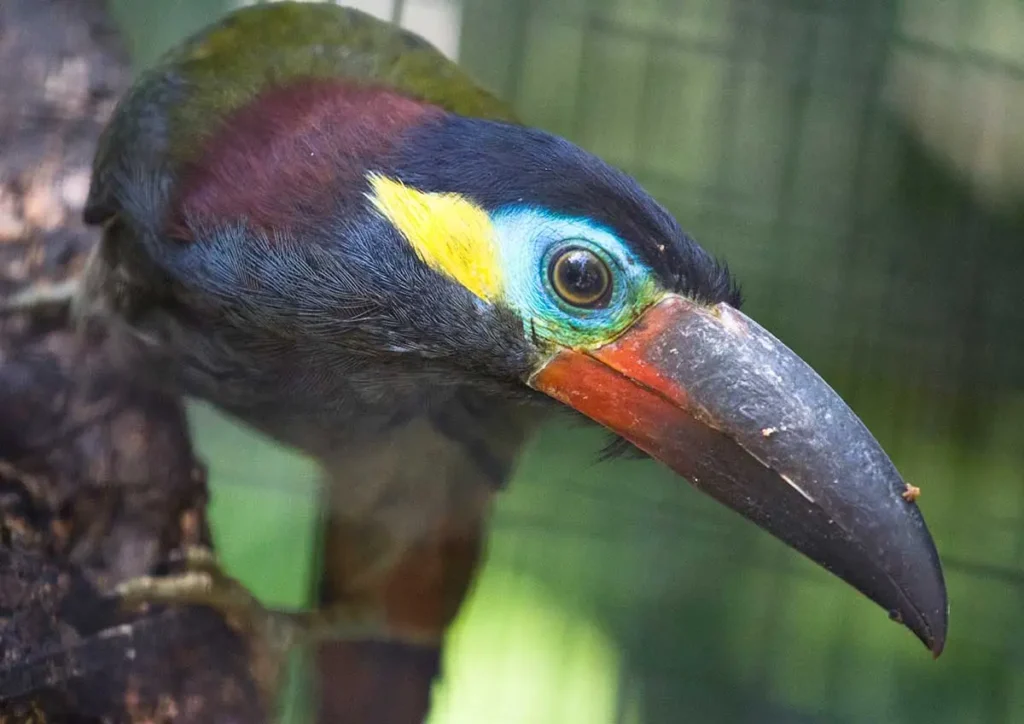
Conclusion
The Guianan Toucanet is a captivating bird species, boasting vibrant colors and a unique bill. From its intriguing social behaviors to its distinct vocalizations, this rare gem of the Amazon rainforest continues to capture the hearts of bird enthusiasts worldwide. As we strive to better understand and protect the Guianan Toucanet and its habitat, we are reminded of the importance of conserving not only this species but all the birds and wildlife that call the Amazon rainforest home.
